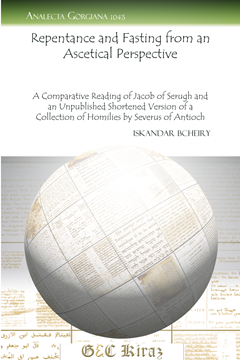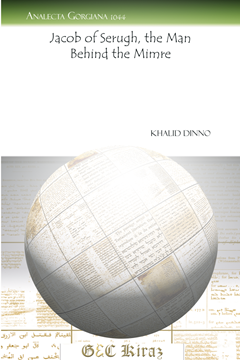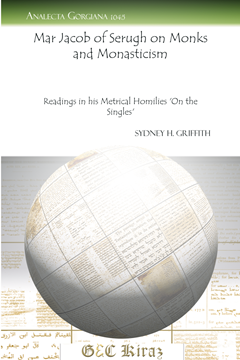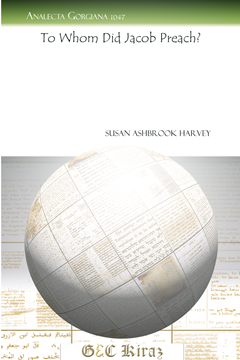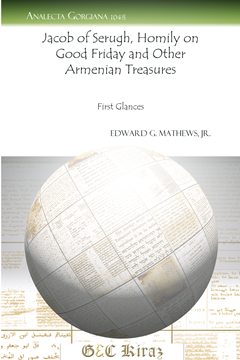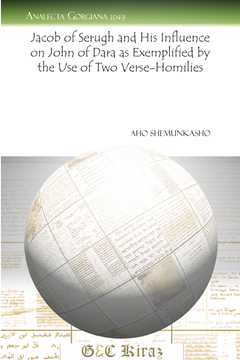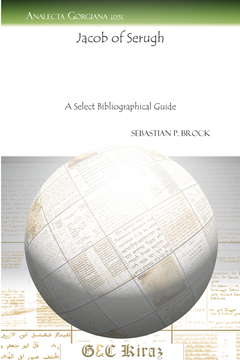Repentance and Fasting from an Ascetical Perspective
A Comparative Reading of Jacob of Serugh and an Unpublished Shortened Version of a Collection of Homilies by Severus of Antioch
Series: Analecta Gorgiana 1043
ISBN: 978-1-4632-0091-6
Saints Jacob of Serugh and Severus of Antioch provided monastic interpretations for Syriac Orthodoxy. Bcheiry highlights St. Jacob’s exegesis of Jonah as a spiritual struggle with ascetic appearances. St. Severus address the movement from self-deial to purity in his Lenten homilies.
$37.00 (USD) $22.20 (USD)
Jacob of Serugh, the Man Behind the Mimre
Series: Analecta Gorgiana 1044
ISBN: 978-1-4632-0092-3
Credited by Dinno as the epitome of Syriac spiritual heritage, Mor Jacob of Serugh interpreted the physical world with the hidden realities of God. A prominent theme in Mor Jacob's mimre is the economy of salvation.
$35.00 (USD) $21.00 (USD)
Mar Jacob of Serugh on Monks and Monasticism
Readings in his Metrical Homilies ‘On the Singles’
Series: Analecta Gorgiana 1045
ISBN: 978-1-4632-0093-0
Griffith discusses “On the Singles”, mimre by Mar Jacob of Serugh, for their reflections of Syrian monastic development. Following a biography and detailed literary analysis, Griffith examines the broader context of regional monastic literature for Mar Jacob’s possible influences.
$35.00 (USD) $21.00 (USD)
The Syriac Orthodox Celebration of the Eucharist in Light of Jacob of Serugh’s Mimro 95
By Amir Harrak
Series: Analecta Gorgiana 1046
ISBN: 978-1-4632-0094-7
Jacob of Serugh's “Mimro 95” details the significance of the Eucharist and spiritual benefit for participants. Harrak divides verses of this commentary in order to relate stages of liturgy within the Pre-Anaphoric and Anaphoric services of 6th century Syriac worship.
$36.00 (USD) $21.60 (USD)
To Whom Did Jacob Preach?
Series: Analecta Gorgiana 1047
ISBN: 978-1-4632-0095-4
The long career of Jacob of Serugh provides insights into Scripture and tradition expected by homilies as well as information about his audience. In this publication, Harvey discusses Jacob of Serugh’s concern for congregations to balance lifestyle and devotional obligations.
$34.00 (USD) $20.40 (USD)
Jacob of Serugh, Homily on Good Friday and Other Armenian Treasures
First Glances
Series: Analecta Gorgiana 1048
ISBN: 978-1-4632-0096-1
Jacob of Serugh's Armenian version of “Homily on Good Friday” is most likely from the reign of Gregory III Pahlawuni (1113–1166 AD). Mathews provides its transcription, commenting that scholarship is widely unaware of Jacob of Serugh’s existing works in Armenian.
$37.00 (USD) $22.20 (USD)
Jacob of Serugh and His Influence on John of Dara as Exemplified by the Use of Two Verse-Homilies
Series: Analecta Gorgiana 1049
ISBN: 978-1-4632-0097-8
Some of John of Dara’s 9th century treatises survive in Codex 356 in Mardin, in which Jacob of Serugh is called “Jacob of Batnan”, “Jacob”, and titles of respect. This article describes Jacob’s significant influence, comparing two-verse homilies in detail.
$39.00 (USD) $23.40 (USD)
Humanity’s Sin in Paradise
Ephrem, Jacob of Sarug, and Narsai in Conversation
Series: Analecta Gorgiana 1050
ISBN: 978-1-4632-0098-5
Van Rompay discusses Jacob of Sarug’s understanding of sin by interweaving a conversation with 4th-century Ephrem’s influence and Jacob's late 5th-century contemporary thinker, Narsai. Critical to this discussion is their assumption of Adam’s created capacities.
$35.00 (USD) $21.00 (USD)
Jacob of Serugh
A Select Bibliographical Guide
Series: Analecta Gorgiana 1051
ISBN: 978-1-4632-0099-2
Brock provides an indispensable bibliographic resource for Jacob of Serugh scholarship. This guide lists Jacob's mimre by biblical passage and liturgical events, uplifted saints and topics, other works including prose and letters, and recommended secondary sources for further study.
$36.00 (USD) $21.60 (USD)
Remembering Music in Early Greece
Series: Analecta Gorgiana 1052
ISBN: 978-1-4632-0100-5
This paper contemplates the various means by which the Ancient Greeks preserved information about their musical history, highlighting oral/aural tradition and the transition to literacy when inscriptions could capture information in roughly datable contexts. Music history sources and motives are also examined.
$40.00 (USD) $24.00 (USD)
